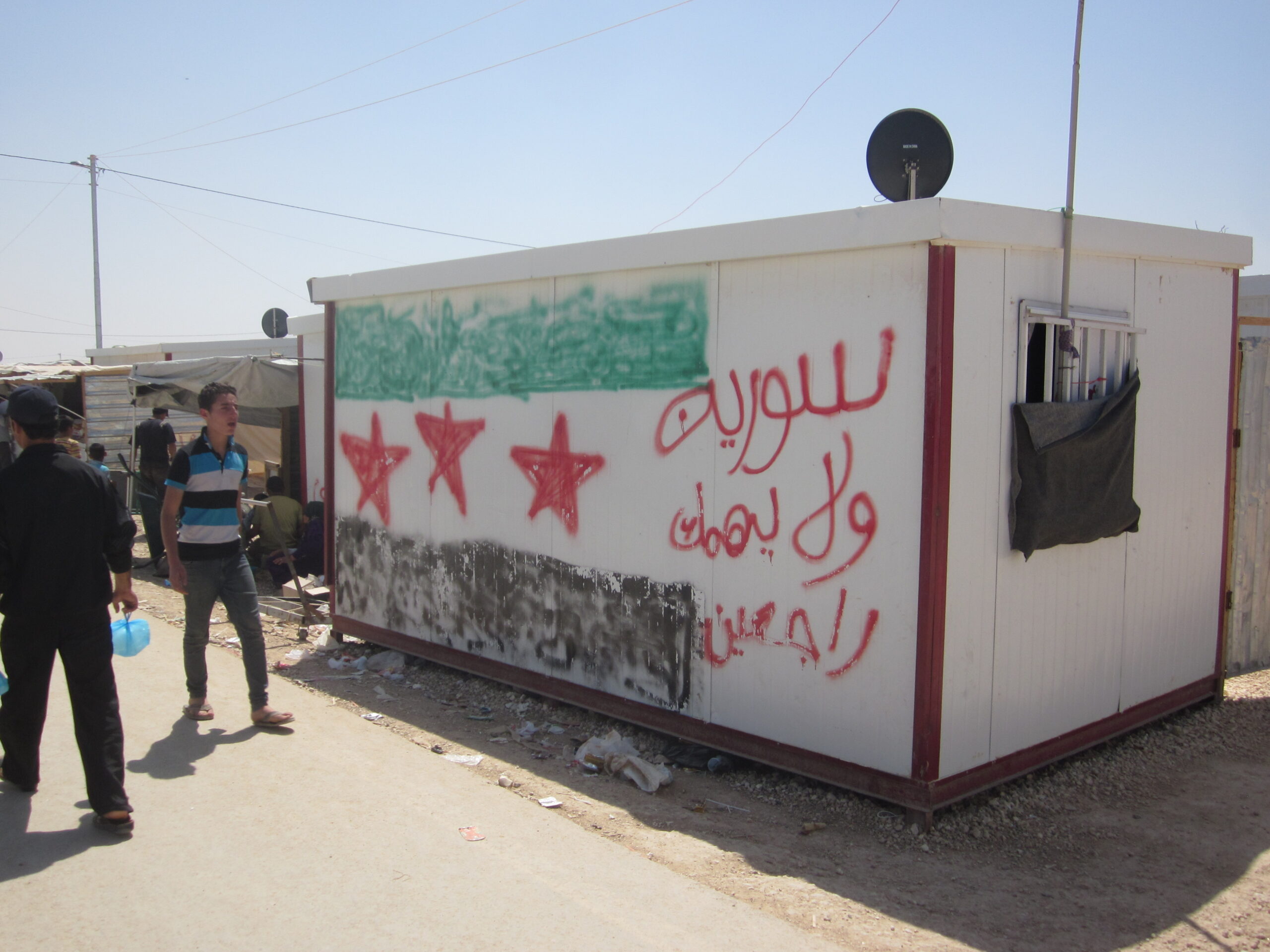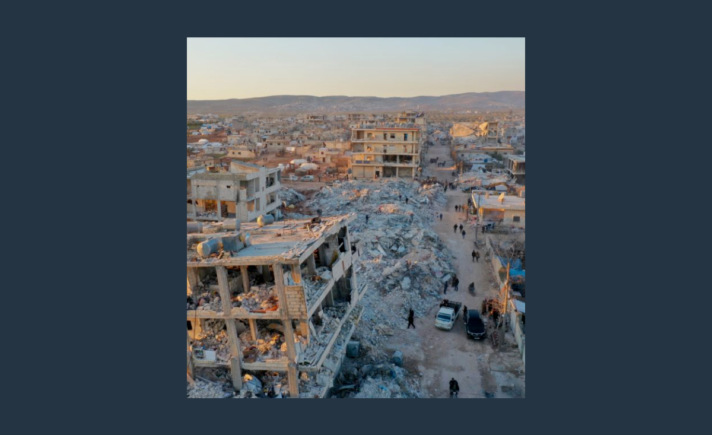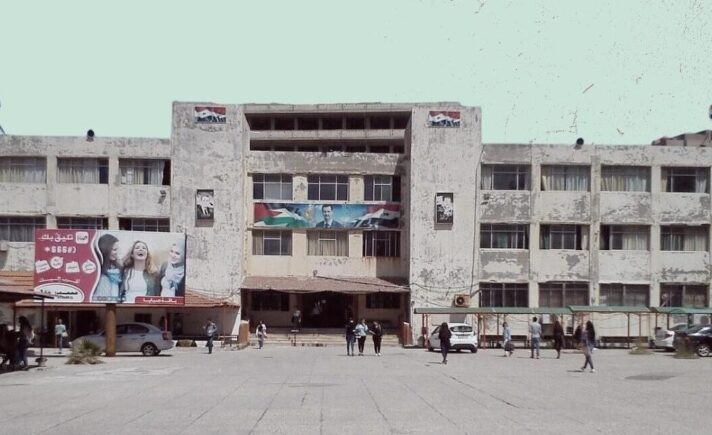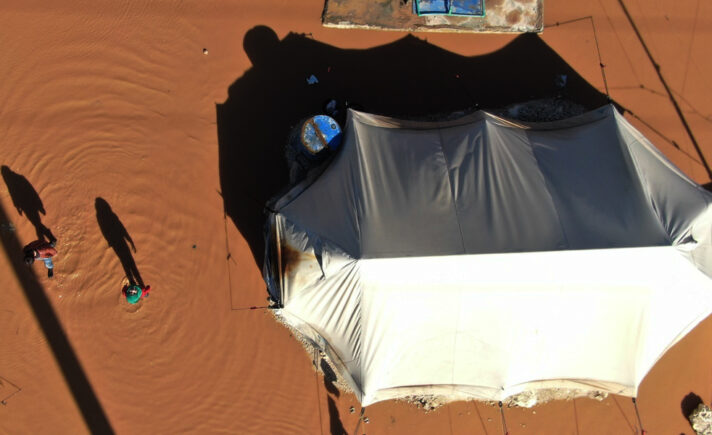After seven years of repression and war, more than half the Syrian population no longer live in their own homes. Most are internally displaced, but nearly six million have fled the country altogether in search of asylum. They dream of one day returning to their homes, but a new law means that many may never be able to.
On the 2nd of April, Law No. 10 was issued by the Syrian regime. The law authorizes the formation of new local administrative units (governorates, cities, and towns) tasked with registering property ownership within their area of jurisdiction. Private property owners are then given thirty days to register and provide proof of ownership. Failure to do so will result in the property’s confiscation by the state without compensation.
The regime has presented this law as a means by which to re-develop informal slum areas and areas damaged by war. Yet it’s expected to disproportionately target communities once held by rebels, from which the residents have been displaced, in order to prevent their return. These informal working class city suburbs (as well as disadvantaged rural areas) have been hotbeds of resistance, and have therefore been pulverized by the regime’s relentless aerial assault.
Many displaced Syrians are fearful to return to areas under regime control. Registering their property is dependent on security clearance. There have been numerous reports in recent months of returnees suffering arrest, torture, or forced conscription. Last month a pro-opposition news site released a database of 1.5 million Syrians wanted by the intelligence services. The list dates from 2015, so is likely to have increased in size since. Relatives of those on the list may also face danger. The regime has a history of enacting its retribution on family members of perceived dissidents. Some property owners may currently be in prison, killed, or disappeared.
Even for those willing to take the risk of returning, obstacles remain. Many homes were built without permits as urban areas rapidly expanded in recent decades and corrupt officials were always ready to turn a blind eye for a bribe. Many of those who built or bought their homes legally no longer possess documents. There are reports of the destruction of property records by regime forces in a number of areas returned to the state’s control. For example, in July 2013 the land registry in Homs burnt to the ground, in what was seen as a deliberate attack. There are similar reports from Zabadani, Darayya, and Qusayr. And many people fled their communities without taking property deeds or other forms of civil documentation (such as proof of births, deaths, and marriages), or have been unable to register these in exile.
Law No. 10 is seen by many as the regime’s attempt to implement demographic change. It’s been widely compared to Israel’s Absentee Property Law (1950) which legalized the seizure of property from Palestinians driven from their homes, transferring it to Israeli ownership. In this case the state wants to transfer property away from communities it will never be able to rule through consent, into the hands of loyalists.
Time and again entire communities which rebelled against the state have been subjected to forced population transfers. It’s happened in Madaya, Zabadani, Darayya, Moadamiyya, eastern Aleppo, and now in the eastern Ghouta, where tens of thousands have been evicted. All cases follow a similar pattern: the rebellious community is subjected to a siege which prevents the entry of food and medical supplies; it is relentlessly bombed from the air with residential areas, agricultural land (where it exists) and vital civilian infrastructure deliberately targeted. The starving and traumatized population, which may have resisted for years, is finally given the ultimatum—surrender or face annihilation. Forced capitulation deals are then accompanied by forced population transfers; a war crime and crime against humanity. Law No. 10 is part two of the displacement story, the part that ensures the displacement is permanent.
In some cases the houses of those forced out have already been demolished. In 2014 Human Rights Watch reported on unauthorized demolitions being carried out on thousands of homes in opposition strongholds of Damascus and Hama, effectively erasing entire neighborhoods from the map. In some areas the homes of those forcibly evicted have been turned over to regime loyalists. This practice often has a sectarian dimension. Opposition communities largely comprise Sunni Muslims, whereas many minority communities have stayed loyal to the regime. When Old Homs was cleansed of its inhabitants in 2014, reports emerged of Alawite and Shia loyalists from nearby villages being moved into vacant Sunni homes. Foreign settlers are also moving in. There are reports of property being handed to Iranian-backed Shia militants and their families from Iraq and Lebanon. There are reports too of record falsification, enabling the transfer of property to new owners. The new law stipulates that in the absence of property ownership documents a claimant can still apply if they possess an official identity document or passport. Recent (unconfirmed) reports claim that the regime has issued thousands of Syrian passports to Iranian, Afghan, and Pakistani fighters.
In a 2015 speech, Assad declared, “Syria is not for those who hold its passport or reside in it; Syria is for those who defend it.” Through the transfer of property into loyalist hands, the regime is developing facts on the ground, ensuring its stronghold in areas it desires for its future rump state. Both the Iranian state and Iranian property developers are reportedly purchasing land around the capital and Homs. Iran hopes its companies will benefit from the future reconstruction drive and has strategic interests too in acquiring land, particularly in the Qalamoun Mountains along the Lebanese border to ensure a connection to its client Hizbullah.
The country’s reconstruction drive—estimated as requiring more than $250 billion—will be the arena through which the regime rewards its allies. The regime has always bestowed patronage for loyalty, practising ruthless crony capitalism, and reconstruction will allow it to further entrench its political and economic power base. In May 2015, Decree No. 19 was issued. This granted local administrative units the power to establish holding companies to carry out reconstruction work and manage properties on their behalf exempt from taxes. Through partnership with private investors and contractors, these holdings will manage real estate development. This basically facilitates the transfer of public assets and expropriated property to private business.
The model is already being implemented. In 2012, Decree No. 66—considered a precursor to the current law—paved the way for the expropriation of property in two informal areas of Damascus, (the Basateen Mezzeh district and an area reaching from Qadam to Darayya in the south). Residents were evicted and given paltry compensation. It’s been billed as a gentrification project to “redevelop areas of unauthorized housing and informal settlements” and turn them over to high-end residential housing, malls and parks. The governorate-established Damascus Cham Private Joint Stock Company is to lead the development, with starting capital of around $120 million. The Aman Group, owned by regime crony Samer Foz, which works in real estate and the food sector, is a partner. The son of a close Sunni ally of Hafez al-Assad, he’s become one of the most powerful businessmen in the country over the course of the war. Whilst many who have benefited from this regime hail from Assad’s extended family and sections of the Alawite sect to which he belongs, the regime has long courted the support of the Sunni business community, who in turn benefited from Bashar al-Assad’s neoliberal economic reforms and increasing drive towards privatization.
Another person set to benefit from these projects is Assad’s cousin, Rami Makhlouf. He was once estimated as controlling around sixty per cent of the economy through his multiple business interests, and his personal wealth is thought to be in the billions of dollars. In the early days of the uprising many chants were directed against him by the populace he and his friends impoverished. They called for social justice and an end to corruption, as well as political freedoms.
Similarly, in Homs, a plan has been announced to redevelop areas destroyed by the regime, including the former rebellious neighbourhoods of Baba Amr and Jobar. In actuality the regime is reviving the ‘Homs Dream Project,’ which caused evictions prior to 2011, but was subsequently abandoned due to local opposition. Dubbed the ‘Homs Nightmare’ by locals, its vision is to re-develop Sunni areas with glass fronted skyscrapers, restaurants, and shopping malls. These areas in the city center have been disproportionately targeted by bombing despite presenting no significant military value. A report by the Syria Institute and PAX stated the aim of the project is “the redistribution of the population to strengthen the physical control of the city by the pro-government Alawite community.” Law No. 10 now means that similar plans will be put into motion throughout the country in the hope that both funds and stability materialize.
Foreign direct investment will be needed to respond to the huge reconstruction needs. Entire cities have been turned to wastelands. The countries likely to benefit are regime allies, such as Russia, Iran, and China, who were invited to last year’s International Trade Fair in Damascus. These countries won’t condition their aid on human rights or political reforms. Regime figures have already stated that European and American companies will not benefit unless their governments apologize for their opposition to the regime. Essentially, reconstruction efforts will enrich regime figures and allies who are responsible for the country’s destruction while cementing the power of the Assad family and business elite.
In 2011 the Syrian people called for freedom, dignity, and social justice. None of their demands were met. They were brutalized, and millions were driven from their homes. Now the question is: how many will have homes to return to? What does ‘home’ mean anyway when their country is re-built in the image of their tormentor?








